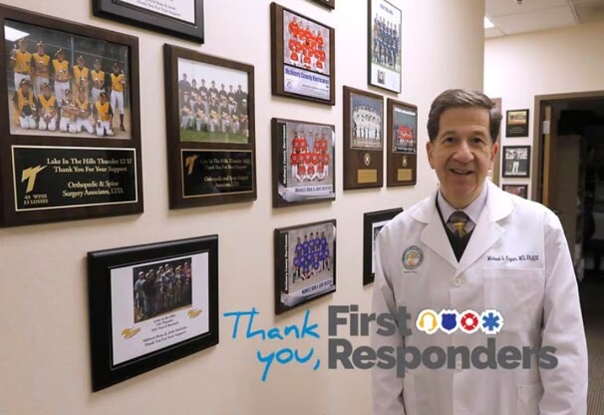Skier’s Thumb
- Category: General
- Posted On:
- Written By: By Kevan E. Ketterling, MD

People think of knee and leg injuries as being associated with skiing, and, indeed, these are commonly seen. Many people are surprised, however, to learn that one of the most common skiing injuries involves the thumb.
What is Skier’s Thumb?
Skier’s thumb refers to a ligamentous injury to the joint where the thumb meets the hand. A ligament called the ulnar collateral ligament crosses this joint on the side toward the index finger. This ligament stabilizes the joint, and prevents the thumb from bending too far away from the palm and the other fingers. Stability of this joint is important to maintain grip strength since the thumb acts as a buttress against which the other fingers push.
Injury to the ulnar collateral ligament commonly occurs when a skier falls on his outstretched arm. As the hand hits the ground, the ski pole acts as a lever, forcefully driving the thumb up and back, away from the palm. This results in stretching, partial, or complete tearing of the ligament.
Diagnosis and Treatment Options for Skier’s Thumb
Examination by a sports medicine physician is important to determine the severity of the injury. X-rays are usually necessary to see if there is a fracture. As with other ligament injuries, skier’s thumb is graded from 1 to 3, based on the amount of disruption.
Grade 1 injuries are characterized by stretching of the ligament with maintenance of joint stability. In Grade 2 injuries, the ligament is partially torn, but the ends are still together. With Grade 3 injuries, the ligament is completely disrupted and the joint is unstable. Sometimes special x-rays taken while stressing the joint are necessary to determine the amount of instability.
Treatment depends on the grade of the injury. Grade 1 injuries respond to rest and protection with a splint for one to two weeks. Grade 2 injuries generally require casting or splinting for two to six weeks, while Grade 3 injuries do not heal on their own and must be surgically repaired. Following casting or surgical repair, a rehab program supervised by a hand or occupational therapist is prescribed to help restore motion, flexibility, and strength to the injured thumb.
Since the ski pole contributes to causing the injury, prevention of skier’s thumb is aimed at insuring that the pole will be released as the skier falls. Modern strapless poles with a plastic grip that fits over the back of the hand are the worst, since they tend to stay on even when the hand is opened. Traditional grips with a strap are better, but best of all are traditional grips without a strap since they are most likely to be released in a fall. Although this may result in a hike up the slope to retrieve a pole after a fall, the increased safety is worth the inconvenience.


